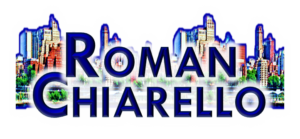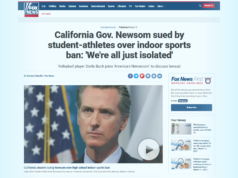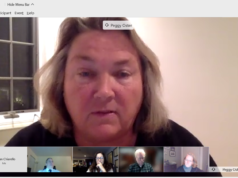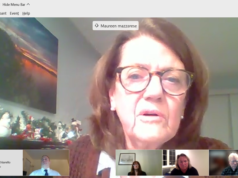Introduction
If you ask someone to give you a general definition of “communications,” chances are it will be hard for them to answer. That’s because everybody interprets communications a little bit differently.
Variations in subject matter, style of writing, and medium of publication can make the field seem impossible to define. In fact, when three of my peers and I each asked a different professor to describe the discipline, the answers varied so widely that a one-sentence definition would not have been enough to effectively capture their ideas.
Throughout my exploration of writing in the communications discipline, I realized that this variance is crucial to the very nature of the field itself.
Methods
Most of my understanding of writing in the communications field has come from my interactions with works of journalism. I have written pieces for the school newspaper, my Intro to Journalism class, and my most recent internship following journalism style guidelines.
As such, I began my research by examining articles in The New York Times, a source with which I was already familiar. Both journalists and readers consider this newspaper to be very credible and respectable. The Times is widely accepted as an authority for news, so it seemed appropriate to include one of its works in this analysis. The article I chose reflected my own expectations about what writing in the communications field would look like.
In order to broaden my selection of communications writing samples, I also searched a traditional research database to find a more academic article. I chose to use the database Communication and Mass Media Complete as my source, as this database was on the list of recommendations for Communication Studies majors provided on the Pace Library website.
Unlike when I selected my other article, I did not have the personal knowledge to know which databases would be better choices than others. Though I have used academic databases many times before in other classes, I have only read a few communications articles that were written in an academic style. Despite this, it was relatively easy to find an article to use for the analysis.
In addition to searching for articles, I also conducted an interview to gain firsthand knowledge of writing in communications. I interviewed Dr. Emilie Zaslow, a Communication Studies professor at Pace University.
I have actually never had Dr. Zaslow as a professor, but a friend of mine is currently in one of her classes, and she recommended that I try to interview her. I reached out to Dr. Zaslow via email, and she was more than happy to participate. Unfortunately, our availabilities did not line up with any common times, so we ended up having the interview over email as well.
Dr. Zaslow describes her discipline as Media Studies and her sub-discipline as Feminist Media Studies. She provided a unique perspective about the field of communications based on her own professional experiences. Throughout the interview, I asked a wide variety of questions, including what types of writing she has done, databases she often uses for research, and rules for writing in her discipline.
Theoretical Frame & Literature Review
In ““I need you to say ‘I’”: Why First Person Is Important in College Writing,” Kate McKinney Maddalena advocates for the use of the word “I” in academic writing, but she maintains that writers’ “choices about where [they] place [themselves] as subject are largely determined by context and the conventions of the field in which [they’re] writing” (180). This is an important distinction, as first-person pronoun usage is strongly encouraged in some fields but completely unacceptable in others.
Most of the writing I have been exposed to in the past has not included personal pronouns. Maddalena’s article helped me realize that this does not always have to be the case, and this realization came in handy for me when analyzing the articles I selected.
C.H. Knoblauch’s “Literacy and the Politics of Education” explores the relationship between literacy and power. Knoblauch writes of the perceived “importance of literate people, who are powerful (the reasoning goes) because they are literate and, as such, deserving of power” (1). He goes on to explain four different interpretations of literacy: functional, cultural, liberal, and critical.
Functional literacy asserts that literacy “[readies] people for the necessities of daily life,” (3) while cultural literacy refers to “awareness of cultural heritage” (4) and adherence to socio-cultural structures. Meanwhile, liberal literacy “emphasizes literacy for personal growth” (5) and critical literacy promotes “critical consciousness of the social conditions in which people find themselves” (7). The case can be made that, in communications, all of these literacies come into play.
Findings & Discussion
Taken together, the two articles and the information from the interview illustrate many facets of communications. The two articles vary greatly, providing a vast cross-section of the types of writing in the field.
The New York Times article, titled “Florida Teacher Says Her Racist Podcast Was ‘Satire’” and published on March 7, 2018, closely adheres to the style of journalism. The article is structured in an inverted pyramid, with the most important information at the beginning of the article, all the way to the least relevant details at the end. It is only two pages long, as the event described in the article does not require much in-depth analysis.
Like most works of journalism, this article relies heavily on quotes, such as the following, to drive the story: “I employed political satire and exaggeration, mainly to the end of attracting listeners and followers, and generating conversation about the content discussed between myself and my guests” (qtd. in Stevens 2). This statement, provided by the subject’s lawyer, provides insight into the mindset and motivations of the subject of this article.
Journalists are also expected to remain as objective as possible throughout their reporting. The writer of this article, Matt Stevens, skillfully positions himself as a neutral observer, simply reporting the facts without editorializing or reacting with his own thoughts. Maddalena’s encouragement to use “I” in writing would certainly not apply in journalism, as the use of personal pronouns would reduce a reporter’s credibility and objectivity.
The second article I chose is titled “Making Things Matter: The Material Value of Old Media” and was published in American Journalism in 2015. As I expected, this article is written in a much different format than the Times article.
Key differences include a much longer length, use of first person, and more discussion, characteristics typical of what Dr. Zaslow describes as “Media Studies.” Zaslow stated in our interview that “scholarly research articles” that are “grounded in theory and history” are most valued in her discipline (Chiarello). This article, which highlights the value of older, more traditional forms of media as a historical record and connection to past events, fits this definition almost perfectly.
Zaslow also explains that the use of first-person is appropriate for writing in her discipline. This is seen in “Making Things Matter,” as writer Carolyn Kitch uses first-person to place herself in the role of researcher and explain her journey throughout her research.
At different points in the article, she writes “I decided to see what I could find out” (357), “I found no evidence” (357), and “I had seen reproductions on the walls” (359). In each of these instances, Kitch’s use of personal pronouns guides her readers through her thought processes as she conducts her research.
This echoes Maddalena’s encouragement of first-person pronoun usage: “[Writers] must separate [their] own interpretations of scholars’ claims, the claims themselves, and [their] argument so as not to misrepresent any of them” (183). By using “I” in her research, Kitch clearly distinguishes between factual evidence, the ideas of others, and her own reactions.
Taken together, the two articles discussed thus far exemplify the diversity of writing in the communications field. Since the field of communications is so broad, it is often interpreted differently by different people.
The different types of literacies, as discussed by Knoblauch, can act as lenses through which to examine communications from different perspectives. First, functional literacy advocates for “the efficient transmission of useful messages in a value-neutral medium,” (3) which can be most often seen in breaking news alerts or updates.
Next, according to cultural literacy, “citizens must learn to speak and write decorously, as well as functionally, and must also read great books, where the culture is enshrined” (4). Some may argue that the media encourages this cultural assimilation by promoting certain types of products, programs, or lifestyle choices.
In my view, liberal and critical literacy go hand in hand when examining communications. As defined in Knoblauch’s paper, liberal literacy promotes language as a means of personal growth: “language expresses the power of the individual imagination, so that nurturing a person’s reading and writing abilities enables the development of that power” (6).
Meanwhile, critical literacy asserts that “the ability to speak alone enables entrance to the arena in which power is contested” (Knoblauch 7). These two literacies fit together when considering the field’s many different forms.
More traditional forms of communications, such as newspapers, television stations, and journals, are dominated by those who have harnessed their reading and writing abilities enough to assume a role of power in the industry. However, modern communications outlets, including blogs and podcasts, allow anyone to publish or broadcast their message regardless of skill level.
After exploring the characteristics of two vastly different articles in communications, as well as considering four possible characterizations of the field itself, one can easily recognize the variance between different types of writing within the field. Adding to this variance, Dr. Zaslow noted that she had recently written a book based on her research.
It may seem unlikely that an objective newspaper article, an academic research paper, and even a book can all belong within the same field. However, my consideration of the interdependence between different subfields of the discipline will help to illuminate why this is possible.
As subfields of communications, journalism and media studies go hand-in-hand.
Without works of journalism like the Times article to populate the media, there would be nothing for media studies scholars to explore. Without media studies articles like “Making Things Matter” that closely examine these works of journalism, the events reported within such works would fade out of the collective memory much quicker.
Ultimately, the intersections between journalism and media studies allow professionals in both subfields to produce meaningful content and share powerful ideas.
Though my knowledge of communications was mainly limited to journalism before conducting this analysis, this analysis has shown me how diverse the writing in this discipline really is, and how important this diversity is to the discipline as a whole.
###
Works Cited
- Chiarello, Roman, and Emilie Zaslow. “Dr. Zaslow on Media Studies.” 8 Mar. 2018.
- Kitch, Carolyn. “Making Things Matter: The Material Value of Old Media.” American Journalism, vol. 32, no. 3, 2015, pp. 355–362. Communication & Mass Media Complete, doi:10.1080/08821127.2015.1064686.
- Knoblauch, C.H. “Literacy and the Politics of Education.” The Right to Literacy. Ed. Andrea A. Lunsford, Helene Moglen, and James Slevin. New York: MLA, 1990. 74-80.
- Maddalena, Kate McKinney. “‘I Need You to Say ‘I’’: Why First Person Is Important in College Writing.” Writing Spaces: Readings on Writing, vol. 1, 2010, pp. 180–190.
- Stevens, Matt. “Florida Teacher Says Her Racist Podcast Was ‘Satire.’” The New York Times, 7 Mar. 2018.








